Studies show that 68% of urban apartment dwellers want to grow trees but believe their balconies are too small. You’ll be surprised to learn that numerous tree varieties can thrive in spaces as tiny as 4×6 feet while staying under $100 per plant. From fruit-bearing dwarf citrus to elegant Japanese maples, these compact trees can transform your balcony into a verdant retreat without compromising your space or budget.
Contents
- 1 Japanese Maple: A Compact Classic
- 2 Dwarf Citrus Trees for Sweet Returns
- 3 Container-Friendly Olive Trees
- 4 Slender Bamboo Varieties
- 5 Space-Saving Columnar Apple Trees
- 6 Petite Fig Trees for Urban Spaces
- 7 Decorative Dwarf Conifers
- 8 Multi-Season Cherry Blossom Trees
- 9 Potted Palm Tree Options
- 10 Miniature Magnolia Varieties
Japanese Maple: A Compact Classic
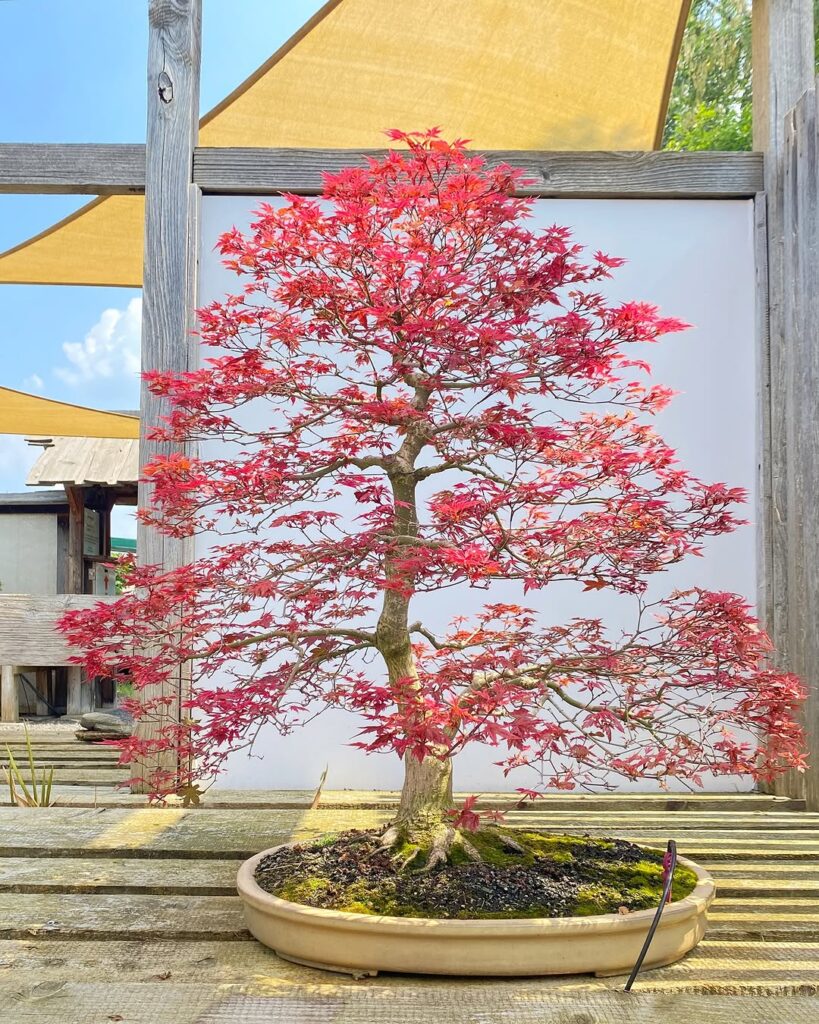
Japanese Maples are elegant, slow-growing trees that make perfect specimens for balcony containers due to their compact size and stunning foliage. These ornamental trees typically reach heights of 6-10 feet when grown in containers, displaying delicate, lacy leaves that transform from vibrant spring greens to brilliant reds and oranges in fall. Their naturally graceful branching pattern and dome-shaped canopy create artistic silhouettes year-round, making them an excellent focal point for small outdoor spaces.
- Light: Partial shade to filtered sun; protect from harsh afternoon sun
- Water: Consistent moisture but not waterlogged; water deeply when top inch of soil feels dry
- Soil: Well-draining, slightly acidic soil rich in organic matter
- Temperature: Hardy in zones 5-8; protect from strong winds
- Container: Large pot with adequate drainage holes
- Fertilizer: Light feeding with balanced, slow-release fertilizer in spring
- Humidity: Appreciates regular misting in dry conditions
- Pruning: Minimal pruning required; remove dead or crossing branches in late winter
Dwarf Citrus Trees for Sweet Returns
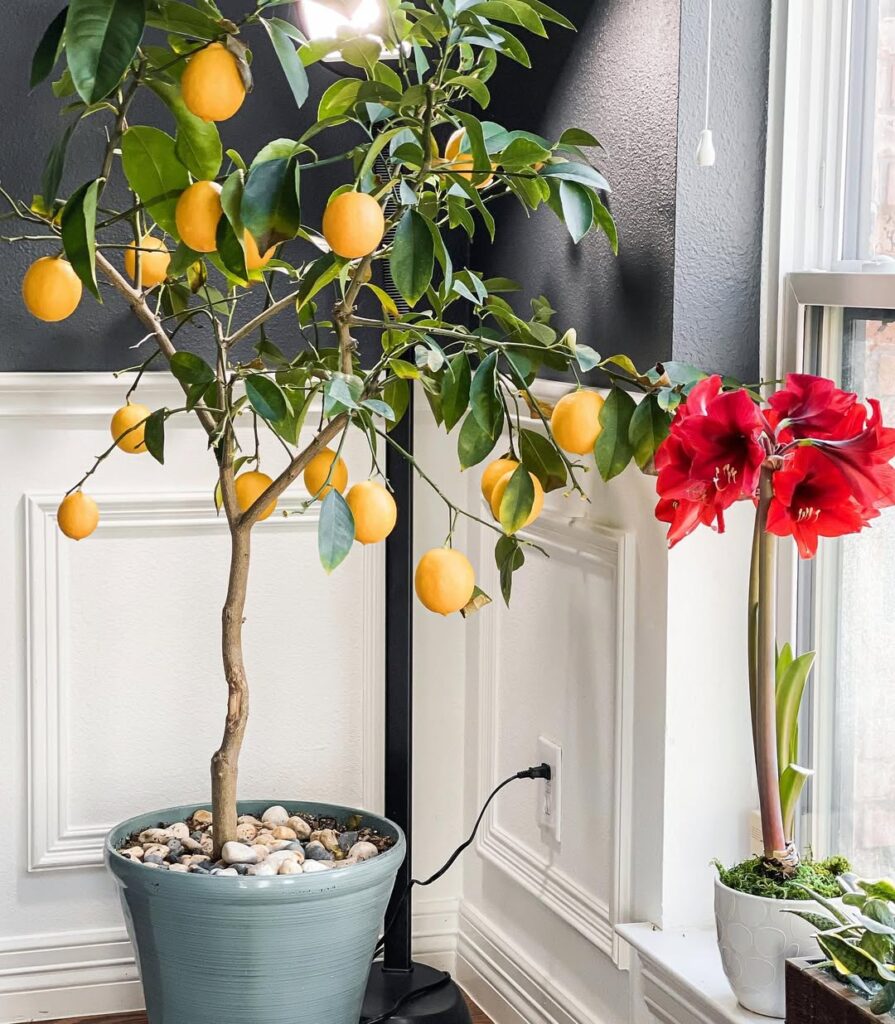
Growing dwarf citrus trees on a balcony offers a rewarding way to produce fresh fruit in a compact space. These miniature versions of standard citrus trees typically reach heights of 4-8 feet when container-grown and can yield full-sized lemons, limes, oranges, or kumquats. Common varieties include Meyer lemons, Calamondin oranges, and Kaffir limes, which not only provide edible fruit but also add ornamental value with their glossy leaves and fragrant blossoms.
- Light: Requires 6-8 hours of direct sunlight daily; south or southeast-facing location preferred
- Water: Consistent moisture but not waterlogged; water when top 2 inches of soil feels dry
- Soil: Well-draining citrus mix with pH 6.0-7.0
- Temperature: Ideal range 55-85°F; protect from frost
- Container: 15-20 gallon pot with adequate drainage holes
- Fertilizer: Regular feeding with citrus-specific fertilizer during growing season
- Humidity: Moderate to high; benefit from regular misting
- Air circulation: Good airflow while protected from strong winds
Container-Friendly Olive Trees

Container-grown olive trees make excellent additions to balcony gardens, offering Mediterranean charm in a compact form. These slow-growing trees can be maintained at manageable heights through regular pruning and naturally adapt well to container life. Dwarf varieties like ‘Arbequina’ and ‘Little Ollie’ are particularly suited for balcony growing, typically reaching only 4-6 feet tall when contained, while still producing silvery-green foliage and, in some cases, edible fruits.
- Light: Full sun, minimum 6-8 hours daily; south-facing exposure preferred
- Water: Moderate watering; allow soil to dry slightly between waterings; drought-tolerant once established
- Soil: Well-draining, slightly alkaline soil mix with added perlite and sand
- Temperature: Hardy in zones 8-11; protect from prolonged freezing temperatures
- Container: Large pot with adequate drainage holes; minimum 24 inches deep
- Fertilizer: Light feeding with balanced fertilizer in spring and summer
- Humidity: Tolerates both dry and humid conditions
- Air circulation: Good airflow needed to prevent fungal issues
Slender Bamboo Varieties
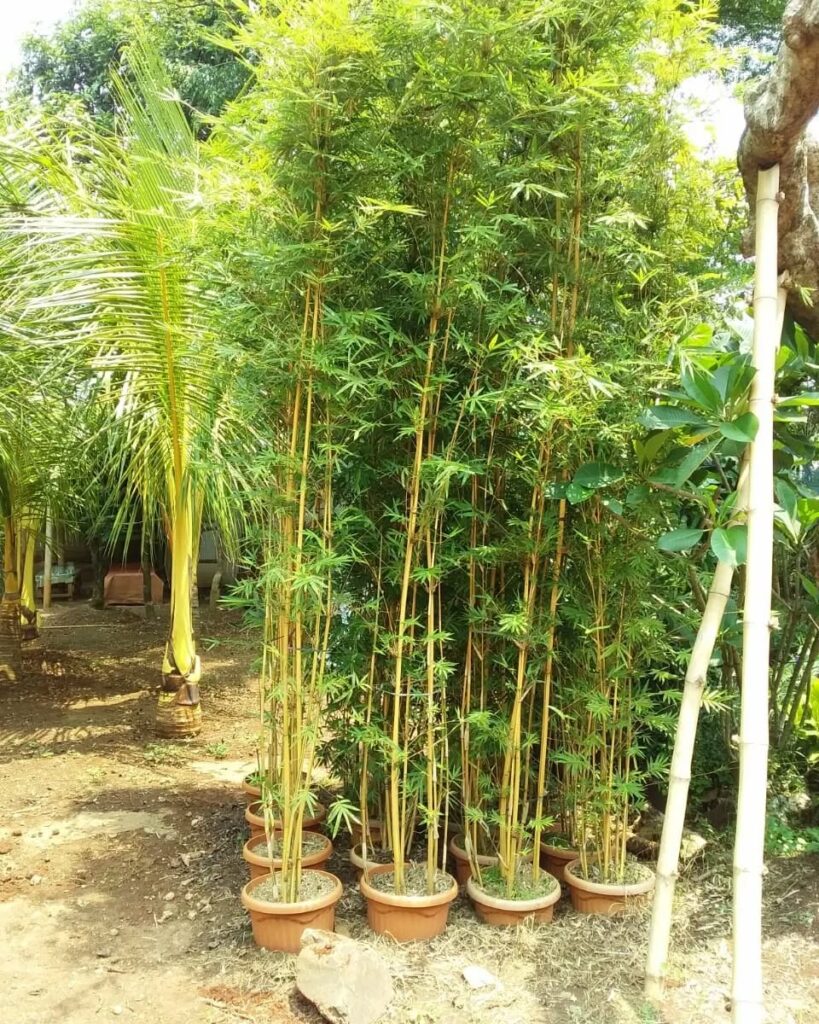
Slender bamboo varieties are excellent choices for balcony gardens, offering vertical interest without overwhelming limited spaces. These narrow-growing bamboos, such as Bambusa multiplex ‘Alphonse Karr’ and Fargesia rufa, typically reach heights of 8-15 feet while maintaining a compact spread of just 2-3 feet. Their elegant canes and delicate foliage create natural privacy screens while adding a zen-like aesthetic to balcony spaces, and their clumping growth habit prevents aggressive spreading.
- Light: Partial to full sun; morning sun with afternoon shade is ideal
- Water: Regular watering to maintain consistently moist soil; avoid waterlogged conditions
- Soil: Well-draining, rich potting mix with added organic matter
- Temperature: Varies by species, but most prefer 55-75°F
- Container: Deep pots with drainage holes, minimum 24 inches deep
- Humidity: Moderate to high humidity levels
- Fertilizer: Balanced fertilizer applied monthly during growing season
- pH: Slightly acidic to neutral (6.0-7.0)
Space-Saving Columnar Apple Trees
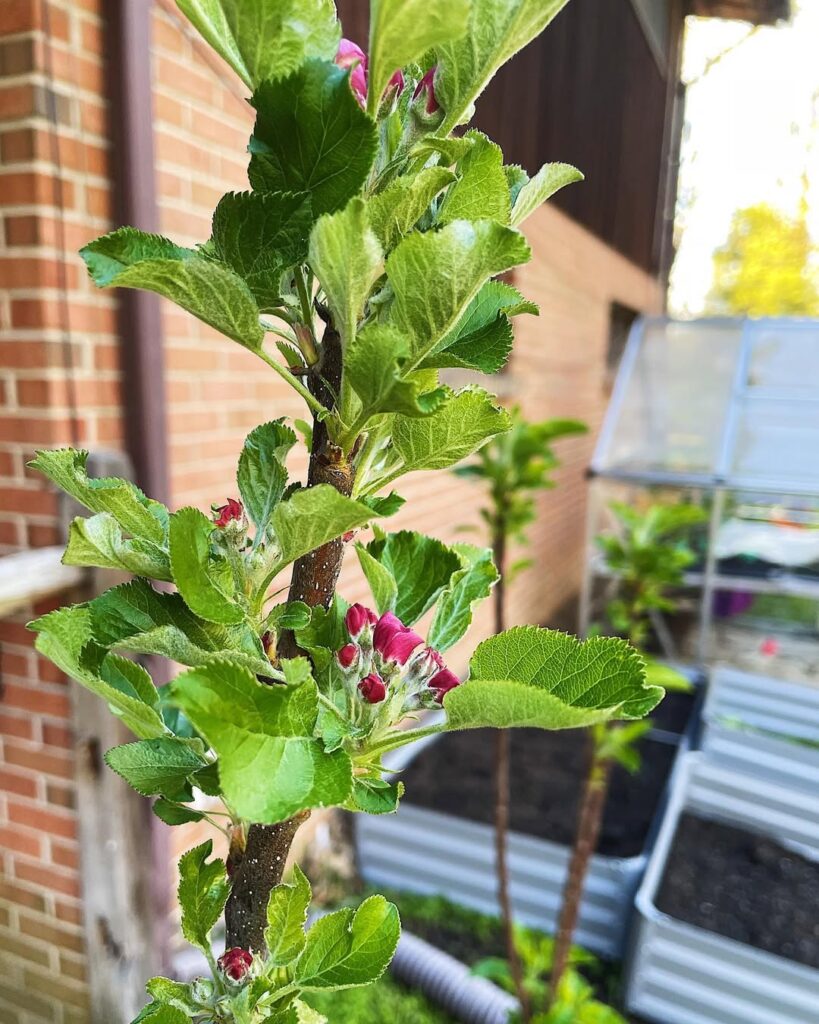
Columnar apple trees, also known as urban apple trees or pillar apple trees, are perfect for small balcony spaces due to their narrow, upright growth pattern. These compact trees typically grow 8-10 feet tall but stay slim at only 2-3 feet wide, producing full-sized apples along their vertical trunk. The trees maintain their slender shape without extensive pruning, making them ideal for container growing on balconies where space is limited.
- Light: Full sun (6-8 hours of direct sunlight daily)
- Soil: Well-draining potting mix with added organic matter; pH between 6.0-7.0
- Water: Consistent moisture; water deeply when top 1-2 inches of soil feels dry
- Container: Minimum 15-20 gallon pot with drainage holes
- Temperature: Hardy in zones 4-9; requires winter chill hours for fruit production
- Fertilizer: Balanced fertilizer in spring and mid-summer
- Pollination: Most varieties need a compatible pollinator nearby for fruit production
Petite Fig Trees for Urban Spaces

Petite fig trees, particularly the Ficus carica variety, are excellent choices for balcony gardening due to their compact size and ability to thrive in containers. These dwarf varieties typically grow 6-8 feet tall when properly maintained, producing sweet, edible fruits while adding Mediterranean charm to small urban spaces. Their naturally bushy form can be easily pruned and shaped to fit confined areas, making them both decorative and productive additions to balcony gardens.
- Light: Full sun (6-8 hours daily); protect from intense afternoon sun in hot climates
- Water: Regular watering when soil is dry 1-2 inches deep; reduce in winter
- Soil: Well-draining potting mix rich in organic matter; pH 6.0-6.5
- Container: Large pot (15-20 gallons) with drainage holes
- Temperature: Hardy in zones 7-11; bring indoors when temps drop below 20°F
- Humidity: Moderate; tolerates dry air but benefits from occasional misting
- Fertilizer: Balanced, slow-release fertilizer in spring and summer
- Pruning: Regular pruning to maintain size and shape; best done in late winter
Decorative Dwarf Conifers
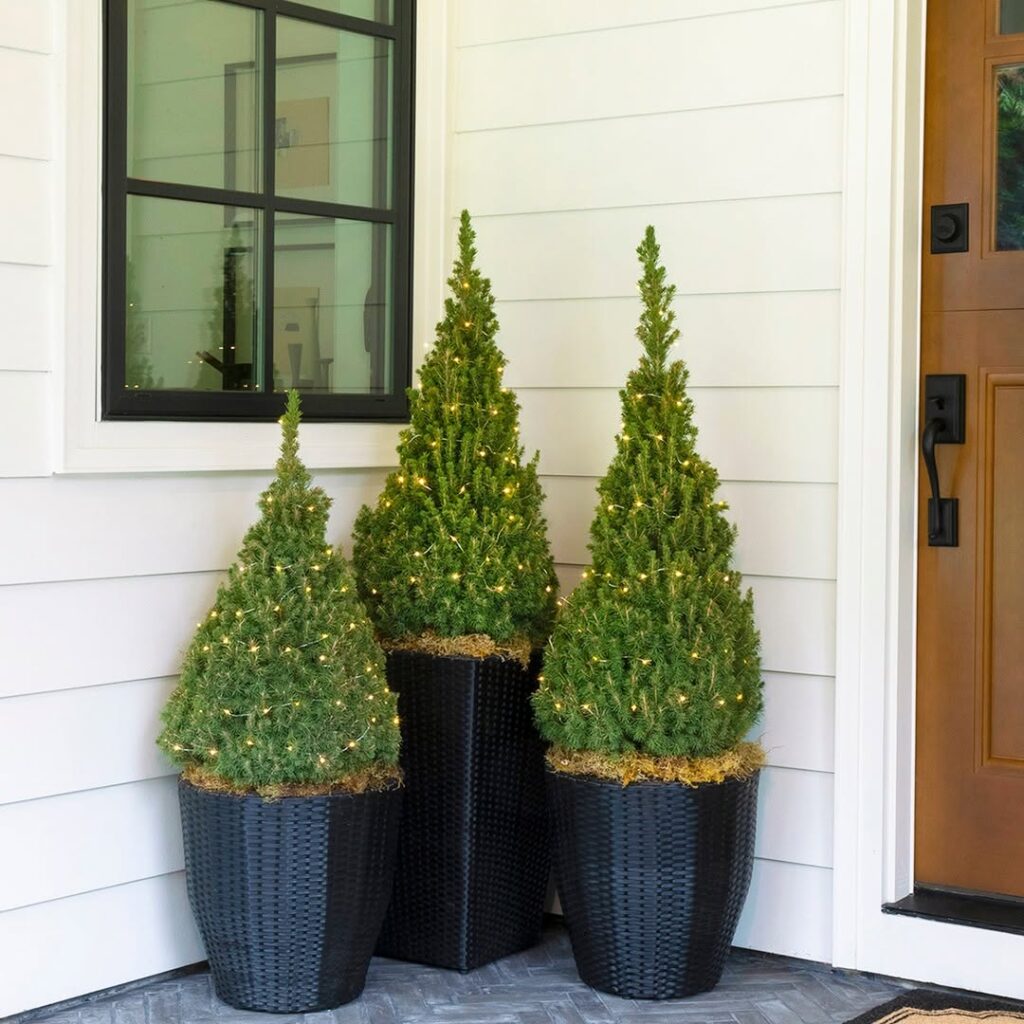
Decorative dwarf conifers are compact evergreen trees that maintain their small stature, making them perfect for balcony gardens. These miniature versions of their larger counterparts typically grow only 1-6 feet tall over many years and come in various shapes, colors, and textures. Popular varieties include dwarf Alberta spruce, miniature mugo pine, and compact juniper cultivars, which add year-round structure and visual interest to small outdoor spaces while requiring minimal maintenance.
- Light: Most dwarf conifers need full sun to partial shade (minimum 6 hours of direct sunlight daily)
- Water: Moderate watering once established; soil should be moist but not waterlogged
- Soil: Well-draining, slightly acidic soil with pH 5.5-6.5
- Temperature: Hardy in zones 3-8, depending on variety
- Container: Deep pots with adequate drainage holes
- Fertilizer: Light feeding with balanced, slow-release fertilizer in spring
- Spacing: At least 2-3 feet apart if planting multiple specimens
- Pruning: Minimal; shape lightly in early spring if needed
Multi-Season Cherry Blossom Trees
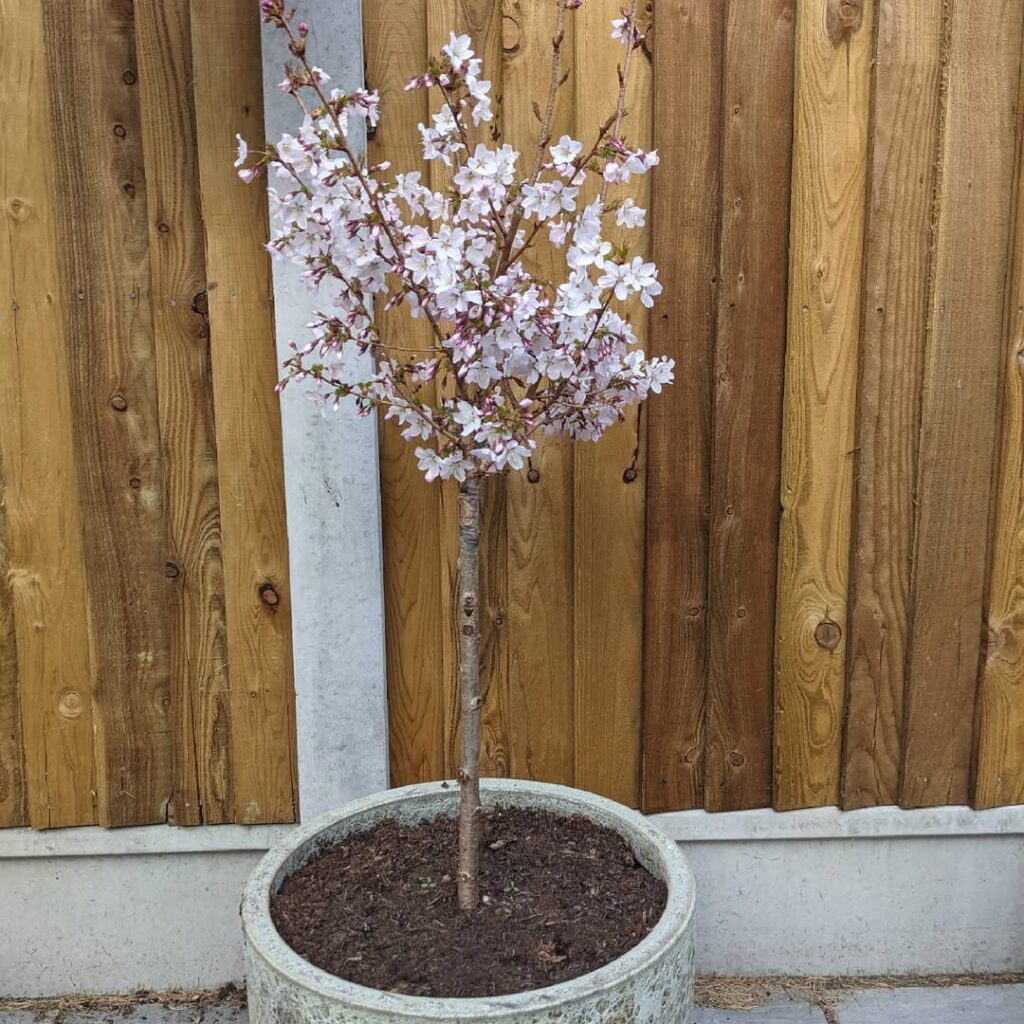
Multi-season cherry blossom trees can bring year-round visual interest to balcony spaces through their stunning spring blooms, lush summer foliage, fall color changes, and attractive winter bark patterns. Dwarf varieties like ‘Hiromi’ or ‘Amanogawa’ are particularly well-suited for container growing on balconies, typically reaching heights of 6-8 feet when properly maintained. These compact trees provide the classic cherry blossom experience while remaining manageable in small spaces.
- Light: Full sun to partial shade (minimum 6 hours of direct sunlight daily)
- Water: Consistent moisture with well-draining soil; water deeply when top 2 inches of soil feels dry
- Soil: Rich, loamy soil with pH between 6.0-7.0
- Temperature: Hardy in zones 5-8; prefers moderate climates
- Container: Large pot (minimum 24 inches wide) with adequate drainage holes
- Fertilizer: Balanced, slow-release fertilizer in spring and mid-summer
- Pruning: Light pruning after flowering to maintain shape and size
- Winter Protection: Move to sheltered area during severe weather; mulch to protect roots
Potted Palm Tree Options

Palm trees in containers can transform a balcony into a tropical oasis while being manageable in small spaces. Several compact palm varieties, including Parlor Palm, Pygmy Date Palm, and European Fan Palm, are well-suited for container growing and can thrive on balconies. These species typically remain relatively small when potted, reaching heights between 3-10 feet, making them perfect for creating vertical interest without overwhelming the space.
- Light: Most potted palms prefer bright, indirect light; morning sun and afternoon shade are ideal; protect from intense afternoon sun
- Water: Keep soil consistently moist but not waterlogged; water when top inch of soil feels dry
- Soil: Well-draining, rich potting mix with added perlite and sand
- Temperature: Most palms prefer temperatures between 60-80°F (15-27°C)
- Humidity: High humidity levels of 40-60%; mist leaves regularly in dry conditions
- Container: Use pots with drainage holes; size up gradually as palm grows
- Fertilizer: Apply balanced, slow-release palm fertilizer every 3-4 months during growing season
Miniature Magnolia Varieties
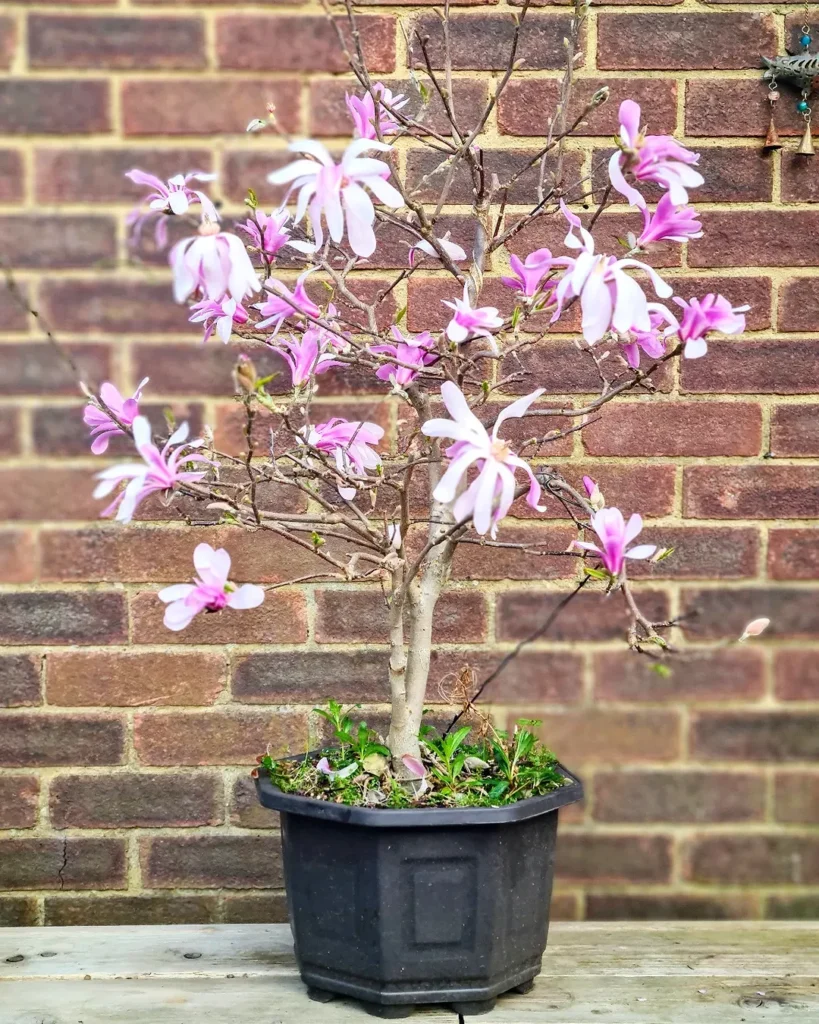
Miniature magnolia varieties offer all the charm of their larger cousins while being perfectly suited for balcony containers. These compact cultivars typically grow between 6-12 feet tall and can be maintained even smaller through proper pruning. Popular dwarf varieties include Magnolia stellata ‘Royal Star’, Magnolia liliiflora ‘Jane’, and Magnolia grandiflora ‘Little Gem’, all of which produce the characteristic showy blooms that magnolias are famous for while maintaining a manageable size suitable for balcony growing.
- Light: Full sun to partial shade, with morning sun and afternoon shade being ideal
- Water: Consistent moisture but not waterlogged; water deeply when top inch of soil feels dry
- Soil: Rich, well-draining, acidic soil with pH 5.5-6.5
- Temperature: Hardy in zones 4-9, depending on variety
- Container: Large, sturdy pot with adequate drainage holes
- Fertilizer: Slow-release fertilizer in spring and mid-summer
- Humidity: Moderate to high humidity levels
- Spacing: Minimum 24-inch diameter container per plant
